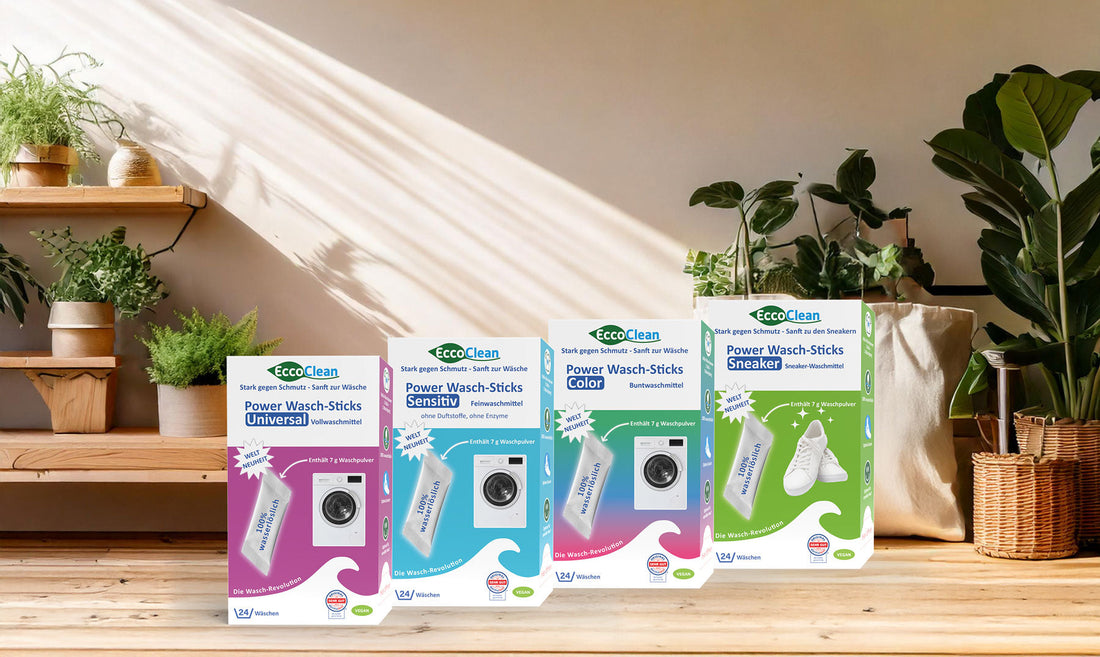
Less plastic, more sales: Sustainable packaging solutions in retail
Share
Plastic packaging is an ingenious invention. Yet at the same time, it causes enormous environmental damage. While efforts to increase recycling are increasing, they are far from sufficient. The obvious solution: avoiding plastic packaging. This not only helps the environment but also retailers.
The numbers are almost unbelievable. Facing them is certainly worth it. German environmental activist Christoph Schulz compiles global data on plastic waste on his website , including accurate links to the relevant sources. Here's a small excerpt for 2024:
· In Germany alone, around 41 kilograms of plastic packaging waste are generated per capita per year.
· Germans consume around 320,000 coffee-to-go cups per hour. That's around 3 billion disposable cups per year. Worldwide, the number is probably around 500 billion.
· The plastics industry produces nearly 400 million tons of plastic annually. More than a third of this is used as packaging material.
· Plastic bottles decompose in the ocean after about 450 years. However, they aren't gone by then. They turn into microplastics.
A list that could be extended indefinitely.
The alternatives to plastic are becoming more
There are many approaches to improving these conditions. On the one hand, at least Europe is striving to expand and optimize recycling infrastructure. At the same time, there are ongoing advances in materials research, for example, toward new, compostable polymers. The pressure behind these efforts has increased significantly in the wake of the EU Packaging Regulation (PPWR).
And an obvious solution is also increasingly sought: the replacement of plastic packaging with environmentally friendly materials. The boundaries of what is feasible are constantly being pushed further. For example, for a particularly sensitive area – fresh food – there are already fiber-based packaging solutions that guarantee food safety even without plastic barriers.
A prime example of sustainable packaging
More and more manufacturers are embracing this idea and replacing plastic packaging with alternatives. One example is EccoClean, a washing powder that is not only particularly environmentally friendly in itself, but also boasts eco-friendly packaging.
🌿 The EccoClean Wash Sticks each contain seven grams of powder in a paper sachet. What's special about them: The sticks dissolve completely in water after just a few seconds, leaving no residue. This effect has been confirmed not only by extensive testing but also by a certificate. Dissolving packaging already exists, but it's made of plastic film – and there's still no evidence that they ultimately don't leave behind microplastics. The EccoClean Wash Sticks leave nothing behind, not even waste paper.
🌿 The outer packaging for each of the 24 sachets is made of cardboard that is recycled. The small box is designed to be as space-saving as possible, which not only saves material but also ensures more sales per meter of shelf space.
Triple advantage for retailers
Retailers who promote such developments and list plastic-free packaged products benefit in multiple ways. First, they save on disposal costs. As the first distributor of so-called system-participating packaging (i.e., packaging that typically becomes waste at the end consumer level), they are obligated to contribute to the recycling costs. Plastic bottles for liquid detergent alone account for significant amounts.
At the same time, sustainable packaging boosts sales. A recent study by Simon-Kucher shows that while the willingness to pay more for sustainably packaged products has suffered somewhat due to the economic situation, 64 percent of the population still remains willing to pay more. Fifty-one percent of respondents pay attention to the biodegradability of the packaging, and 56 percent to its recyclability.
Closely linked to this is the aspect of image enhancement. The ECC Cologne survey found that almost half of consumers expect retailers to take a clear stance on sustainability issues. The most frequently cited criterion: packaging that uses as little plastic as possible, but ideally, is completely plastic-free.
